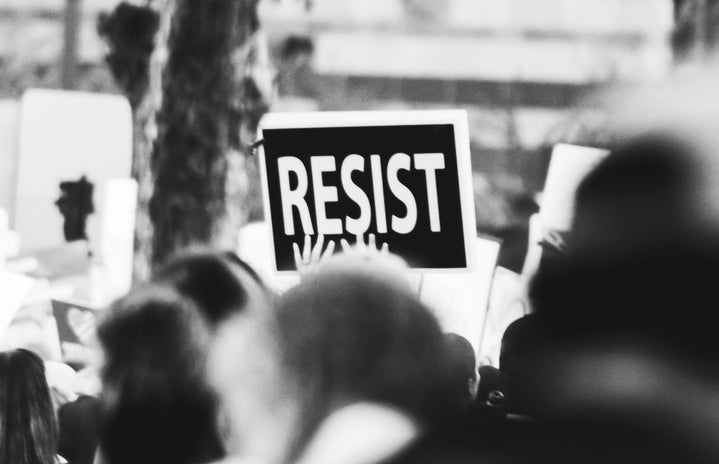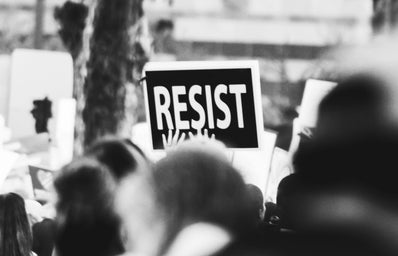Edited by: Rianna Lobo
Yemen, a third-world country perched at the southern end of the Arabian Peninsula, has been decimated by long-standing sectarianism, political corruption, and socio-economic repression for the longest time. But only now, as the implacable civil war enters its sixth year – is its humanitarian crisis being recognized as the worst one on the planet.
In a country of 29 million people, 24 million are woefully impoverished and in desperate need of humanitarian assistance for their most basic needs. UNICEF reports warn that if the demand for food is not met, the number of acutely malnourished children could reach a staggering 2.4 million, almost half of which, are children under the age of five. Eighteen million do not have access to sanitation and clean drinking water, and so far, more than 3.65 million people have been displaced. The situation in Yemen is dire, and it demands our attention, so it is imperative for us to understand the underlying causes of the extant war and recognize the major players in it.
Before 1990, North and South Yemen were two independent countries, deeply fragmented by centuries of colonial history, civil unrest, and military violence. They had wildly contrasting outlooks, and as a result of that, the South developed as a mostly secular state with an overwhelming majority of Sunni-Muslims. The North evolved to become the archetype of a conservative Arab society with a predominantly Shia population and a deeply entrenched sense of tribalism.
When friction between the North and the South increased, representatives of the two states came to a mutual agreement and unified their territories to form the Republic of Yemen (ROY) in 1990. Ali Abdullah Saleh of the North became the first president (Head of state) and Ali Salim Al-Beidh of the South, the first vice president (Head of government). The “multi-party” democracy formed did not take all the schism within the country into account as well as it should have. As a consequence, the coalition started to collapse. It could not operate under the weight of hostile political elites who refused to cooperate. Their mistrust for each other was further exacerbated as the two states retained control over their militias. Eventually, this power struggle led to the temporary dissolution of the union and the civil war of 1994.
Leaders of the South announced their separation from the North, but they could only retain control over the sovereign state for two months, after which the Northern militia overpowered the South and won. Once again, Ali Abdullah Saleh of the North took his position as the president and regained control over all of Yemen.
In the decades that followed the North’s victory, Saleh maintained his supremacy over political operations in Yemen by forming international alliances and repressing all opposition by pitching rebel groups within the country against each other. Under his governance, the economy of Yemen worsened, national debt surged, and political corruption grew rampant. He was linked to several cases of human rights abuse. Further, UN experts say that he had amassed up to $60bn through corruption during his presidency. Several communities in Yemen despised him and actively sought to unseat him.
In 2011, a deluge of anti-government and pro-democracy protests rolled across the Middle East and North Africa. Demonstrators and activists from several countries in the region took to the streets to express their outrage against the existing status quo and demand new political and socio-economic reforms. These uprisings were collectively dubbed as the Arab Spring or the Arab Awakening, and Yemen was one of the many countries it inspired.
Southern separatists and Houthis, a minority rebel Shia group, were at the forefront of the revolution in Yemen. They collectively protested against Saleh and ousted him as president in 2012, marking the end of 33 long years of autocracy and abuse. After he surrendered, he was succeeded by his deputy, the vice-president Abdrabbuh Mansour Hadi.
However, Hadi was not adept at leading Yemen either. Under his presidency, unemployment, food insecurity, rebellions, and bombings increased, creating a security vacuum that allowed terrorist groups like ISIS and Al-Qaeda to exploit the failing regime’s vulnerabilities and stage attacks in several parts of the country. Hadi’s response to growing nationwide protests was ineffective, and it further weakened the state institution.
This paved the way for power-hungry, ex-president Saleh to get back into the political scene again. Houthis – the rebel group that had helped unseat him during the Arab Spring, claimed that they were being marginalized by Hadi’s government and allied with his military unit to take control over the capital city Sana’a in 2014. They advanced to the South quickly, and when Hadi was unable to suppress their attacks, he was forced to flee to Saudi Arabia.
In 2015, Hadi called for Saudi intervention. So, in an attempt to restore the exiled leader’s government, Saudi Arabia interceded in Yemen, leading a coalition with nine other Sunni-majority countries to back Hadi and suppress the Houthis. This was called the Saudi-led coalition, or SLC.
Saudi Arabia claims that the Houthis are receiving military aid from Iran, which – like the formerly mentioned rebel group – is Shia dominated. If the history of warfare in the Middle East was any indication, this was the main motive behind Saudi’s intervention. The two powerful countries have always asserted their dominance over Middle Eastern countries by funding opposing sides in what is called ‘proxy-wars’, and that’s precisely what they’re doing in Yemen.
First, the coalition started a bombing campaign on the Houthis to attack their militia and crush Saleh’s supporters. Then, it imposed a blockade on all sea, land and airports as an attempt to restrict Houthis from importing weapons. In 2017, Saleh made an appearance again and publicly declared that he was willing to negotiate with the SLC for lifting the blockade and severed his alliance with the Houthis after blaming them for Yemen’s crisis. Two days later, the Houthis killed him.
The SLC has been widely criticized for its “crimes against humanity”, and for exacerbating the on-going crisis in Yemen. According to the data collated by the Yemen Data Project, the coalition has led more than 21 thousand air raids and has killed or injured more than 18 thousand civilians so far. The blockade has obstructed imports, leading to a severe shortage of food, fuel and medical supplies. Even if the supplies somehow do reach the ports, they are intercepted and pillaged by the Houthi rebel groups who bar the most impoverished from accessing them. One-third of all the airstrikes have hit hospitals, schools, and markets. Currently, only half of the country’s health facilities are functioning, and in addition to that, the country is fighting a cholera epidemic due to unclean drinking water and poor sanitation. Saudi Arabia’s scrupulous inspection and constant bombings have cut off Yemen’s oil production and exports, battering their economy’s mainstay. Furthermore, SLC’s very strategic bombing of sites like factories, power stations and storage facilities has led to large scale unemployment. Which, along with inflation, is wreaking havoc in the country.
Yemen is on the brink of a famine, and Yemenis are traumatized. They cannot afford the war, especially now that COVID-19 is threatening their existence. They lack essential medical supplies, still-standing healthcare facilities and frontline medics. The UN estimates that the death rate in Yemen is about 28%, which is much more than the rate in any other country, and given that millions are already malnourished and weakened by several other diseases, they are particularly vulnerable to the contagious COVID-19 virus. The actual number is suspected to be much higher, considering the lack of testing, and transparency by the Houthi rebels who control the capital and other populous regions within the country.
To mitigate the effect of the crisis and minimize the human cost, well-known organizations like UNICEF, Mercy Corps, World Food Program (WFP), International Rescue Committee (IRC), Yemen aid, Save the Children, The Red Cross and Oxfam, along with several other lesser-known local organizations like Mona and Yemen Hope and Relief, are tirelessly working to provide the Yemenis with food, shelter, and healthcare services in not just cities, but also refugee camps and other remote areas. They have also helped millions of people by implementing programmes that provide them with clean water and sanitation services. Organizations like Oxfam, fund small businesses and hard-hit families to support local markets and educate people about the COVID-19 pandemic. The WFP also runs multiple programmes for undernourished and exploited women and children.
However, OCHA reports that only US$811.5 million has been received out of $3.38 billion that is required to continue providing the Yemenis with humanitarian aid. They said that many critical response programmes had discontinued their services due to lack of funding. If this continues, by the end of September, 9 million people will be cut off from medical care, and a quarter of a million malnourished children will remain untreated.
The human cost of this war is dangerously high, and still escalating. In five years it has ripped through the macroeconomic fibre of the country and reversed two decades of development. But Yemen is not the only Middle Eastern country in such a disastrous quagmire. For centuries, countries like Libya, Syria, Palestine and Lebanon, among many others, have been submerged under multiple layers of corruption, sectarian tensions, economic instability, and devastating foreign interventions. And even though these conflicts have been addressed and brought to the mainstream media, they are often shrugged off as an inevitable consequence of a deep-rooted divide that can not be resolved.
This thinking is where the problem lies.
War is not a trend, and we cannot normalize the ones ravaging the Middle East anymore. We must understand that social divides in these war-scarred countries are festering, and if not remedied, they can lead to an all-out world war that nobody can afford. In Yemen, much like the rest of the Middle East, the key to mitigating the crisis is remodelling the social contract. However, this is a long-term solution that depends on their willingness to negotiate and their capacity to compromise. There’s not much we can do about that, but what we can do is acknowledge the on-going crisis and actively spread awareness about it.
We can also help by donating to the aforementioned organizations (hyperlinks to donation sites attached above) or by downloading apps like ShareTheMeal, which is a WFP initiative that allows you to safely donate US$0.8 in just a tap and feed one hungry child for a day, or Freerice, a free game that donates cash equivalent to 10 grains of rice through the WFP for every correctly answered multiple-choice question.



